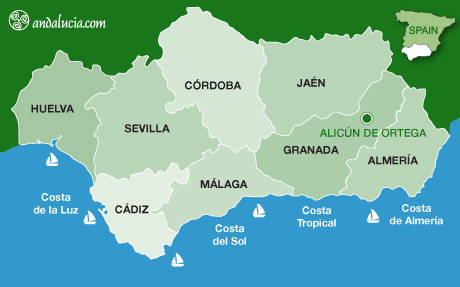Alicún de Ortega
Alicún de Ortega is a village in the north-east Granada province, situated close to the border with Jaén province. Its natural environment attracts both nature lovers and hikers.
Alicun was the setting for the Batalla de Piedras in 1486, when Christian troops defeated the forces of the Nasrid ruler of Granada and recaptured the town, opening the way for the Catholic Monarchs to reconquer the capital.
Although the name of the town refers to thermal baths, these in fact are in the municipal district of Villanueva de las Torres. Alicún de Ortega has beautiful natural surroundings for hikes, such as the banks of the river Guadahortuna and forest routes.
The origins of the town go back to Bronze Age and even Iberian times. In the Roman era it was known as Acatucci, while the Moors called it Al-Liqut.
Sights of interest include the medieval church Nuestra Señora de la Anunciación, San Roque chapel and the Castillo de los Moros, with ceramics dating from the 15th century.
Handicrafts from Alicun are based around handmade esparto grass baskets, made by old people in the town.
In terms of gastronomy the town is famous for its sweet pastries: mantecados, roscos de vino, alfajores and andrajos, as well as gachas (porridge), and migas de pan y patata (breadcrumbs with potatoes). There is also a small wine industry.
The town's fiestas in honour of San Roque are in mid-August, when the emigrants who have moved away come back, and in May the romería (pilgrimge) of the Virgen de Fátima when all the townsfolk tuck into a meal of ham with beans.
Alicún de Ortega is situated 104km from Granada
Book your stay in Andalucia Now!
